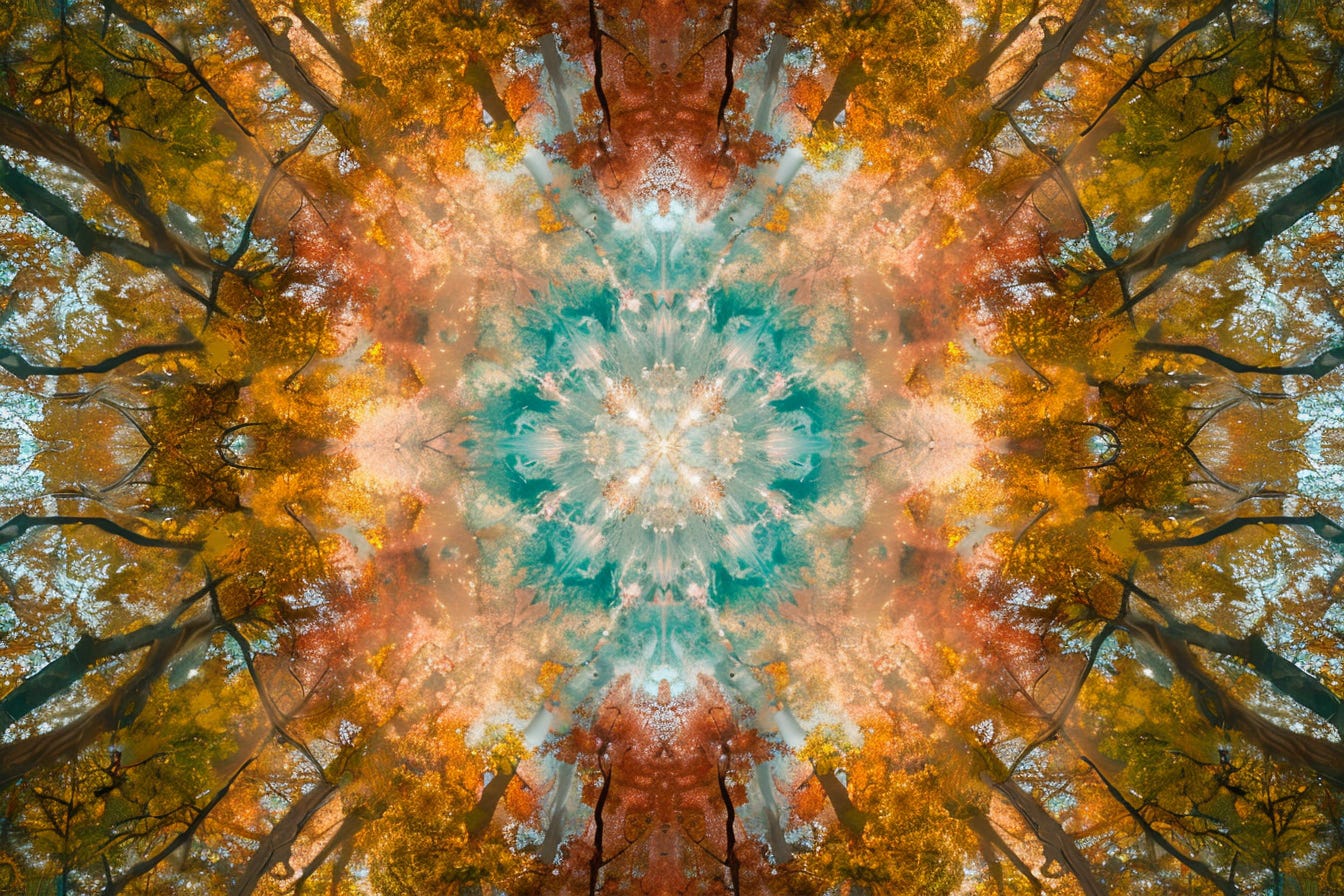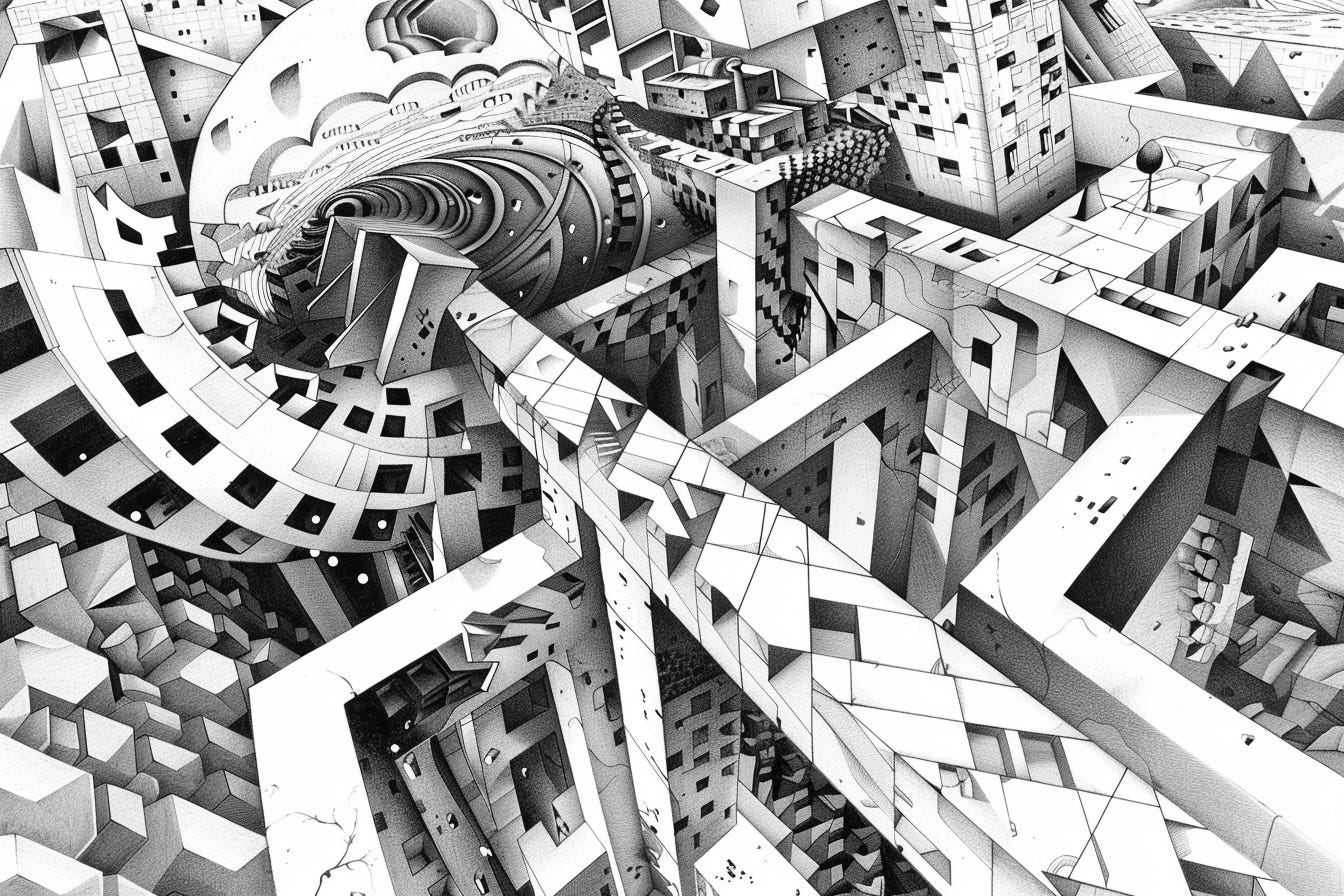This article was originally published at The Mad Genius Club on September 21, 2019. My life is still filled with the splinters of joy, art, and creative impulses.
I remember playing with kaleidoscopes as a kid. There were more than one kind, but they all operate off the same basic principle of three mirrors in a tube that reflected what was at the end of the tube into fascinating fractalline shapes. One kind had little plastic shards that when you turned the tube, fell into new patterns. This one wasn't as cool as the other, that had a clear glass marble at the end and whatever you pointed it at made up the pattern. The world became art, with that kaleidoscope.
I was thinking about that this morning because I am struggling to re-engage with the joy of creating recently. Life has been busy, my routines are disordered, and while I'm not a slave to routine, the routine of life allows me things that chaos and anarchy does not. Like the guilt-free time to sit and create, or even more important, to calm my mind so that the seeds of creativity can be planted and flourish. I want to create, I need it, but it's out of my grasp right now and that is frustrating.
There's more to it, of course. Sometimes you need to relax and let go of the stress and even the desire to create, before it will come to you. I did this inadvertently the other day, at work. I was listening to music for a change from my usual podcast routine, and one of the songs captured my imagination. Sabaton's Camouflage tells a story (I won't spoil it for you) and before I knew it, I was sitting down after my day to write out a little flash fiction piece inspired by the song. This isn't going to work for everyone, of course, but sometimes taking the time to get away from what you've been focused on and frustrated by gives your brain the room to take a breath and get back to work. Burnout is a thing for writers, too. Maybe more so than some other tasks.
The element of chaos in the story, however, is a very different tool. We, the writers, get a godlike view of the world the characters live in. Which can make it very easy - especially for a plotter - to make all the elements of the story ordered and tidy. Real life, as we just touched on, is not so neat and obliging. Oh, you can't throw in too much chaos, of course. The difference between fiction and non-fiction is that fiction must be plausible to your audience or they will leave you bad reviews. Fiction readers like the very orderliness of created worlds because it helps them to escape from the uncertainty of their own lives. But they want there to be surprises and realism, too. They don't ask much, do they? Adding a kaleidoscope effect to your writing isn't easy. I've had both complaints and compliments when I have attempted it.
The thing about a kaleidoscope is that it's a very limited viewpoint. It may seem terrifically complex, but the tunnel of the mirrored tube only allows you to see a tiny portion of your normal range of vision. In a story, that limiting effect can be very useful: few readers are interested in the many events going on all at once. They are interested in the limited characters of your story, and how the world affects them/they affect that world, and the setting necessary for that. My First Reader loves Louis L'Amour's books, as I'm sitting here I can lift my gaze from the keyboard, to a shelf filled with them. But one thing about them (ok, other than the oft-repetitive themes and characters) is that they are limited in scope. They generally take place in a small setting (a grand one, if in the Far West of the US, with great open skies and glorious scenery, but I only know that through having been there and the books immediately evoking my memories). Most of the characters are not at all concerned with what's going on in, say, Europe. None to the best of my recollection even mentioned, say, India. Which isn't a limitation of the books. They are set in a time and place when communication and travel were much slower. But the tunnel of the story kept the frame around it small. As a storyteller I can do worse than to study L'Amour for this and other reasons. Sprawling epics are also not a bad thing, but...
When I was a girl (o, long and lost time before... I kid. I don't miss being a teenager)I would visit my local library and check out books. I was too young to have my own transportation, so I wanted the most bang for my, er, time. Which meant that since I could only check out x books, I wanted the biggest books I could lay my hands on. I walked through the shelves and picked out the satisfyingly broad spines, knowing there would be enough material in that fat mass of pages to keep me busy for a while. Which is how I wound up reading MM Kaye. She wrote sprawling epics of British India, great soap-opera style sweeping romances, and I, a child who adored Kipling, settled right into them. But they were also limited in their kaleidoscope of story. They were focused on a small region of the globe. But she did an admirable job of making very large stories out of that.
Introducing the element of chaos is tricky. You need enough to give a sense of disorder, of unsettling the character and perhaps giving the readers an explanation of why they did the seemingly stupid thing. Because the character couldn't tell, in the kaleidoscopic whirl of information surrounding them in the moment, that it was stupid. That's something I'm certain of: we've all made decisions in haste and repented at leisure. But you don't want so much chaos and confusion that your reader loses track entirely of what was going on. Throw someone out of the story and they are less likely to come back into it. Do it more than once and they are likely to wander off never to return to that story or any others with your name on it. So treat chaos like you're using the kaleidoscope - limited vision, and breaking up familiar outlines into beautiful art.








